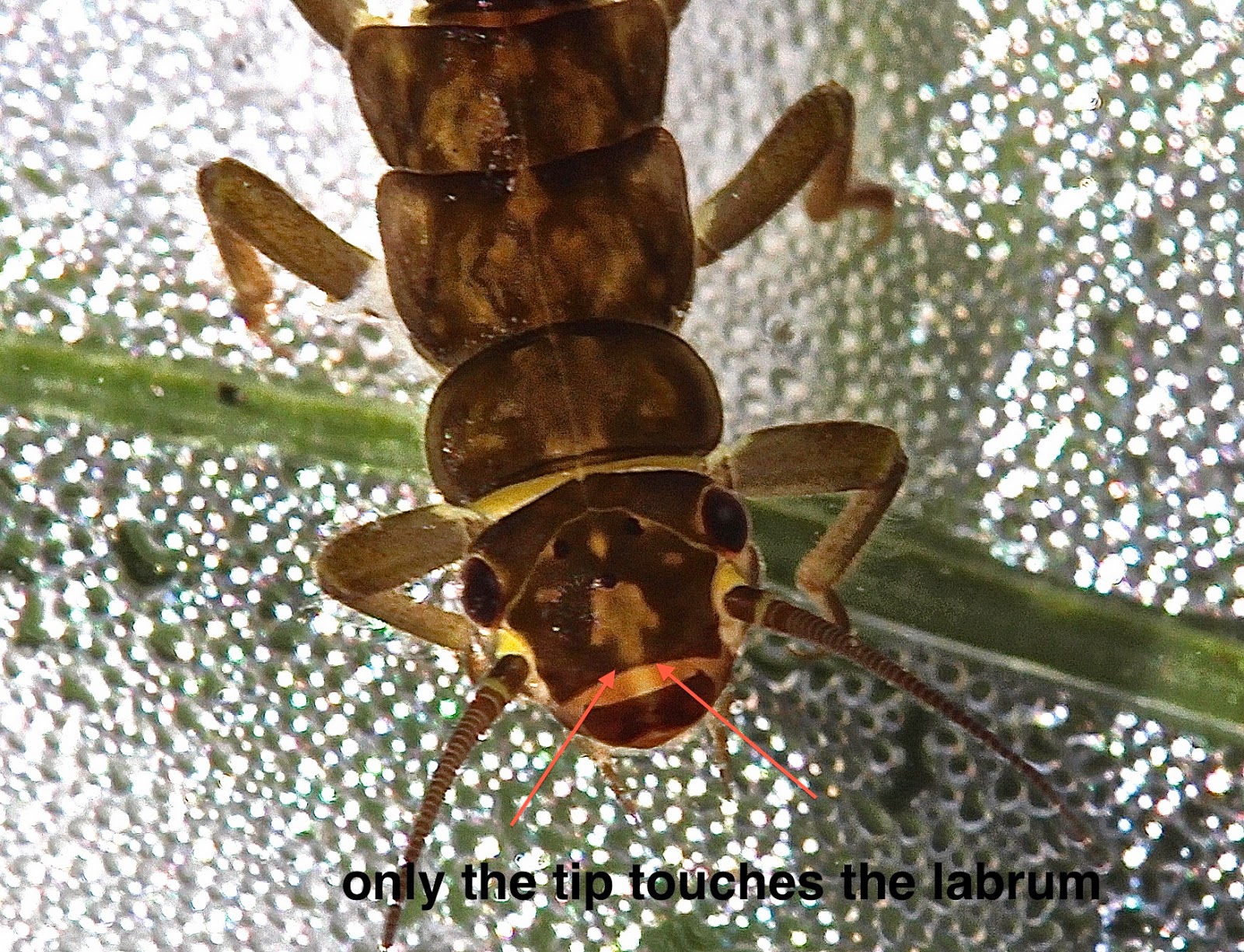Almost all of the Perlodid stoneflies we see in the spring are genus Isoperla, and the Rapidan River is one of the places I go to see multiple species. To date, I've found -- in the Rapidan -- Isoperla dicala, Isoperla holochlora, Isoperla nr. holochlora, Isoperla montana/n.sp., Isoperla similis, Isoperla orata, and one I call Isoperla nr. orata. The Perlodid stone at the top of the page is Isoperla nr. holochlora, and it's one that I see only rarely: I see it each year at the Rapidan, and last year I found one in Entry Run in Greene County. It has a Tolerance Value of 0.0, so you'll only find it in very clean mountain streams.
The "nr." in Isoperla nr. holochlora stands for "nearly": it's "nearly" the same as Isoperla holochlora, a species that looks like this.
But they differ in two different ways. Note that on I. holochlora, the large pale spot anterior to the median ocellus is -- in Beaty's words -- "open to the labrum" ("The Plecoptera of North Carolina," p. 23).
Also notice the three dark longitudinal stripes on the abdominal terga. Now look again at the nymph we found this morning.
On April 11, 2012, I found this I. nr. holochlora at the Rapidan, one that was much more mature. A beautiful insect.
The cold temps and high water this winter and spring have really slowed everything down.
_________________
But I did find insects that are getting mature. The flatheaded mayfly Epeorus pleuralis -- I'd expect that at this time of the year.
And one that surprised me, the pronggilled mayfly, genus Paraleptophlebia. I saw quite a few nymphs with the tell-tale black wing pads. They're ready to hatch.
_______________
Other photos:
1. I found just a couple of small minnow mayflies: Baetis tricaudatus. One was a male...
the other a female.
As with other small minnow mayflies, the males are more colorful, but the females are bigger.
2. Free-living caddisfly larva, Rhyacophila fuscula. This was a big one, long and fat.
3. Of course I couldn't resist a couple of photos of the Giant stonefly we see in this river -- Pteronarcys biloba.
4. A colorful Chloroperlid (Green stonefly), genus Sweltsa.
5. But the dominant taxon remains the Perlodid stonefly, Isoperla montana/n.sp., and again I saw hundreds of nymphs in the leaf packs. I only photographed this one: it was darker than most.
________________
The spring Isoperlas are finally starting to show. It's one of my favorite times of the year.




















No comments:
Post a Comment